Hanuman : The Divine Monkey of Strength and Devotion
Listen
At a glance
| Description | |
|---|---|
| Origin | Indian Mythology |
| Classification | Hybrids |
| Family Members | Anjana (Mother), Kesari (Father) |
| Region | India |
| Associated With | Loyalty, Strength, Problem solving, Friendship |
Lord Hanuman
Introduction
Few figures in world mythology command as much love, reverence, and awe as Hanuman, the divine monkey hero of Hindu tradition. Known for his immense strength, wisdom, and unshakeable devotion to Lord Rama, Hanuman embodies the perfect blend of power and humility. He is a god of courage, energy, and unwavering service — a protector of the weak and a symbol of spiritual discipline.
Hanuman plays a central role in the Ramayana, where he serves as Rama’s devoted ally in the rescue of Sita from the demon king Ravana. Yet beyond his heroic feats, Hanuman’s story is deeply symbolic — a lesson in selfless devotion (bhakti), focus, and the transcendence of ego. He represents the divine potential that lies within every being, waiting to be awakened through faith and purpose.
Across India and Southeast Asia, Hanuman’s name is invoked in times of trial, his temples are filled with chants of “Jai Hanuman!”, and his stories continue to inspire strength and hope across generations.
Physical Traits
Hanuman is typically depicted as a powerful humanoid figure with a monkey’s face and tail, symbolizing both his Vanara heritage and his spiritual purity. His body is strong and athletic, representing mastery over physical energy, while his expression radiates calmness and compassion.
He is often shown kneeling in devotion before Rama, hands folded in reverence, or tearing open his chest to reveal Rama and Sita enthroned within his heart — a powerful image of devotion so pure that divinity dwells within him. His skin is sometimes rendered golden or red, symbolizing fire, vitality, and courage.
In iconography, Hanuman carries a mace (gada), symbolizing strength and authority, and sometimes a mountain — recalling the episode when he lifted an entire peak to deliver healing herbs to the wounded Lakshmana. Artists also portray him leaping across oceans or flying through clouds, emphasizing his limitless energy and purpose-driven motion.
Family
Hanuman was born to Anjana, a celestial nymph who was cursed to live as a Vanara (monkey), and Kesari, the leader of the monkey tribe. Through divine intervention, he is also considered the spiritual son of Vayu, the wind god, who granted him his incredible speed, agility, and vitality.
From his birth, Hanuman displayed superhuman abilities — leaping across the sky to grasp the sun as a child, mistaking it for a fruit. When the gods subdued his power to protect the world, they also blessed him with wisdom and immortality.
Hanuman’s familial connection to the wind gives him a symbolic dimension: he is the breath of life, the movement of spirit, and the carrier of divine will. In the cosmic sense, he belongs to the family of beings who bridge earth and heaven — loyal servants of cosmic order (dharma).
Other Names
Hanuman is known by many names that reflect his virtues and deeds. As Anjaneya, he is the “son of Anjana.” As Pavanputra, he is the “son of the wind.” In his aspect as the devoted servant of Rama, he is called Ramduta (messenger of Rama).
He is also known as Mahavira (“the great hero”), Bajrangbali (“the powerful one with a body of thunder”), and Sankat Mochan (“the remover of obstacles”). Each name highlights a different quality — courage, loyalty, or divine grace — making Hanuman both a hero and a spiritual guide.
Powers and Abilities
Hanuman’s powers are vast, and yet his humility exceeds them all. Gifted with superhuman strength, flight, and shape-shifting, he could grow as tall as a mountain or shrink as small as an atom. His agility and endurance made him invincible in battle.
In the Ramayana, Hanuman leaps across the ocean to reach Lanka, sets the city ablaze with his burning tail, and carries the Sanjeevani mountain to save Lakshmana’s life — each feat demonstrating not just might, but focus and faith.
Spiritually, Hanuman possesses the ability to transcend fear and ego, which is considered his greatest power. His unwavering devotion to Rama represents the victory of love over pride and the transformation of raw energy into divine purpose.
In yogic philosophy, Hanuman is the embodiment of the prana (life force) — the dynamic wind energy that sustains all beings. His stories symbolize mastery over the senses and perfect alignment between thought, action, and devotion.
Modern Day Influence
Hanuman’s legacy is alive across India and much of Asia — not merely as a mythic hero but as a living deity of devotion and strength. His temples, often marked by saffron flags, are centers of faith where devotees seek courage, protection, and clarity. Chanting the Hanuman Chalisa, a 40-verse hymn written by Tulsidas, is believed to invoke his blessings and drive away fear.
In Indonesia’s Wayang Kulit (shadow puppetry) and Thailand’s Ramakien, Hanuman appears as a cultural hero — mischievous, brave, and profoundly loyal. In Cambodia and Laos, his image adorns temple carvings, symbolizing vitality and divine service.
Modern popular culture has also embraced Hanuman as an icon of discipline, self-control, and resilience. From yoga practitioners to athletes, his stories inspire the ideal of strength guided by humility. His influence extends into literature, art, comics, and animation, reinforcing his timeless appeal as both warrior and sage.
Philosophically, Hanuman remains the archetype of perfect devotion (bhakti). His heart, wholly surrendered to Rama, represents the path of love as the highest form of enlightenment. In an age of chaos and ego, his calm strength reminds humanity that true power comes from service and faith.
Related Images
Source
Goldman, R. P. (1984). The Ramayana of Valmiki: An Epic of Ancient India. Princeton University Press.
Kinsley, D. (1998). Hindu Goddesses and Gods: Visions of the Divine Feminine and Masculine. University of California Press.
Narayan, R. K. (1972). The Ramayana: A Shortened Modern Prose Version. Penguin Classics.
Klostermaier, K. K. (2007). A Survey of Hinduism. State University of New York Press.
LearnReligions. (2023). Hanuman: The Monkey God of Strength and Devotion. https://www.learnreligions.com/hanuman-the-monkey-god-177042
IndiaNetzone. (2022). Hanuman: The Vanara Deity and Devotee of Rama. https://www.indianetzone.com/23/hanuman.htm
AncientOrigins. (2021). Hanuman: The Immortal Hero of Devotion. https://www.ancient-origins.net/myths-legends-asia/hanuman-monkey-god-0015820
Wikipedia contributors. (n.d.). Hanuman. In Wikipedia, The Free Encyclopedia. https://en.wikipedia.org/wiki/Hanuman
Frequently Asked Questions
What was Hanuman the god of?
Hanuman, not a god but a revered vanara (monkey god), embodies several noble qualities in Hindu mythology. His immense strength and courage, coupled with unwavering devotion to Lord Rama, make him a symbol of selfless service and unwavering faith. He serves as a role model for scholars, warriors, and devotees, inspiring people with his wisdom, self-discipline, and celibacy. As the son of the wind god, Vayu, he embodies the power of speed and agility, further enriching his multifaceted nature.
What is the real age of Lord Hanuman ji?
Lord Hanuman’s age is an enigma, shrouded in mythology and interpretations. Considered immortal (chiranjivi), some scriptures suggest his age is a staggering 4.32 billion years. Others attempt to estimate his age within human chronology, placing it around 4,000-5,000 years. However, some view his age symbolically, representing timeless devotion, strength, and wisdom, transcending the limitations of human time. Ultimately, his age signifies his enduring qualities and timeless existence in the hearts and minds of Hindus.
Does Hanuman have a child?
While revered as a Brahmachari (celibate) in the core Ramayana and most Hindu interpretations, some regional and modern narratives suggest Hanuman has a child named Makardhwaja. These stories, though outside the canonical texts, offer an alternative perspective on Hanuman’s nature, highlighting his nurturing and protective qualities. Ultimately, whether Hanuman has a child is open to interpretation, reflecting the diverse and evolving nature of Hindu mythology.
Where is Hanuman now in Kalyug?
The question of where Hanuman resides in the present age of Kalyug remains shrouded in mystery and faith. Some believe he dwells physically on Gandhamadana Mountain or in his ancestral home of Kishkindha, while others claim his presence exists within temples dedicated to him. However, many interpretations view Hanuman as omnipresent, existing everywhere where his name is chanted or his praises are sung. Ultimately, his presence in Kalyug transcends physical location, symbolizing eternal qualities of strength, devotion, and wisdom, offering inspiration to all who seek his guidance. Whether physically present or symbolically significant, Hanuman’s influence remains a powerful reminder of the enduring values he embodies.
Who is Hanuman's wife?
While the Ramayana portrays Hanuman as a celibate devotee, regional narratives and modern interpretations paint a different picture. Southern Indian tradition suggests he was married to Suvarchala, daughter of the Sun god, for symbolic reasons. Jaina texts offer a wife named Anangkusuma, focusing on a different aspect of Hanuman’s story. Folktales from various regions add additional wives and children, though their authenticity remains debated. Ultimately, the question of Hanuman’s marital status depends on the chosen interpretation and individual faith.



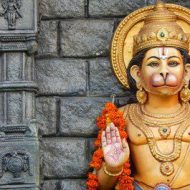

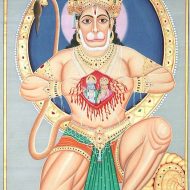
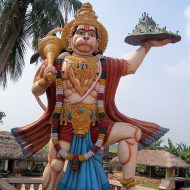
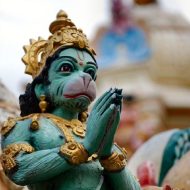
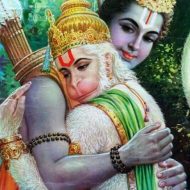




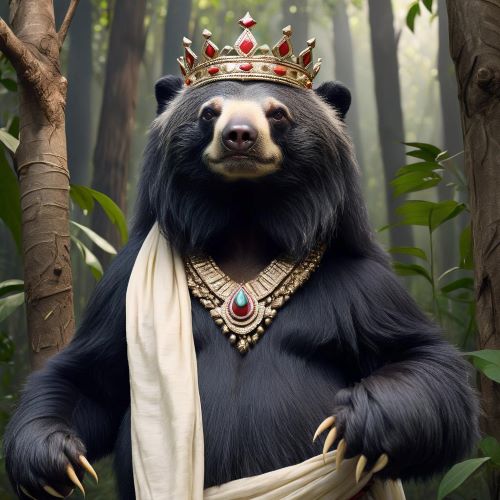

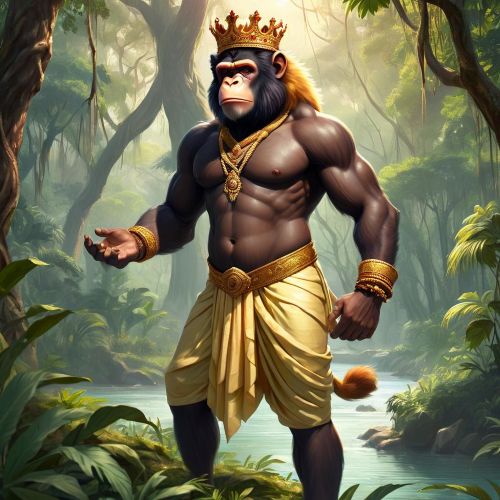
Pingback: Hanuman: The Mighty Monkey God of Hindu Mythology